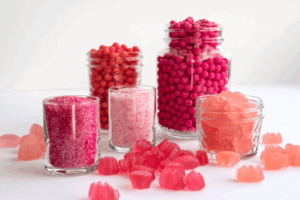Many packaging companies are starting to adapt their machines and materials in order to create an eco-friendly world, so what are the changes occurring on the road to sustainability
The confectionery sector entails many complex industries as chocolate manufacturing, agriculture, and packaging. All of these industries intertwine to allow the confectionery end product to be of a high standard and incredibly successful. Packaging especially is vital to ensure the safety, longevity, and the effective presentability of a chocolate or sugary treat. The packaging industry is always developing depending on political factors, economic efficiency, and innovation; therefore, it is important to uncover how packaging has developed and what efforts companies are doing in order to make packaging machines more environmentally friendly.
Packaging history
Around the late 19th century, confectionery packaging used to mainly be made from folding cartons which were used to package biscuits and crackers. The issue that came with this was that it did not fully protect the product, meaning that biscuits particularly became quite stale. Other items such as glass and metal tins have been used to store foods, but those materials were only able to successfully package certain items such as liquids and tinned goods. The making of these items was also more time-consuming, expensive, and susceptible to breaking or damage.
Later in the 20th century the emergence of plastics completely transformed the packaging industry. Plastic was a revolutionary material that was able to provide effective durability, it was shatterproof meaning that it protected the item, and was even more hygienic and lightweight. Also, with regards to presentability plastics, polymers are more flexible, meaning that a certain packaging design can be achieved in a much easier and creative way as the material can be heated and blended to individual liking.
Environmental impact of packaging machines and plastics
For many decades now plastics and polymers have been at the forefront of packaging materials, meaning that many confectionery machines have adapted their features to handle this material correctly. However, plastics are increasingly detrimental to the environment on many levels. Its creation not only contributes to harmful gases being released into the atmosphere, but because plastics are practically not degradable, it means that there is a major issue with wastage. Plastic waste has considerable implications to our land and especially to the ecology within our oceans, as sea creatures like whales ingest the harmful toxins that many plastics release into our seas causing these beings to face, injury, illness, and death. A recent study has supported this by Condor Ferries claiming, “100 million marine animals die each year from plastic waste alone,” and seeing how intermingled plastics and the packaging industry is – the sector must respond to this environmental crisis. Moreover, the UK alongside many other governments has announced a Plastic Tax which means that many businesses that are involved in the production of plastic packaging will have to use plastics that are at least 30% recyclable otherwise will be taxed. Therefore, it is fair to say that the packaging industry cannot escape the environmental crisis.
Read the full article in our January edition.
Media contact
Roshini Bains,
Editor, International Confectionery
Tel: +44 (0) 1622 823 922
Email: [email protected]








